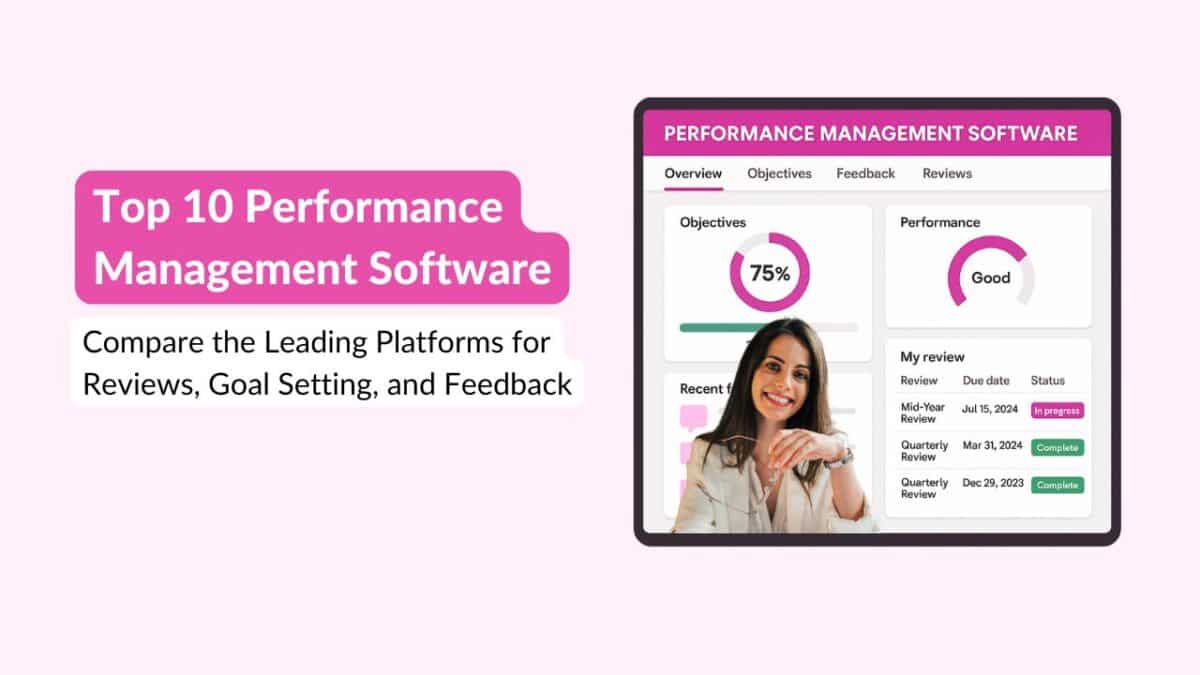The beloved Performance Improvement Plan (PIP) is the golden shovel that will probably end up digging your own grave. There is no way to hide it: for many employees, being told you are on a PIP feels as welcoming as finding a spider in your shoe.
The intent behind the PIP seems noble enough on paper—this is a chance for employees in danger of washing out to try to right the ship before they go down with it and crash and burn. In practice? And here is where it gets a bit tricky.
Whatever the case, is that a great elephant in the room… for PIPs — a paradox that companies don’t seem to get out from between us. Although these plans are meant to promote progress, they frequently have the opposite effect.
In fact, in some cases, they can actually harm your company’s culture and productivity as much as or more than help. Crazy, right? The PIP Paradox — Explained in detail!
PIPs: Catalyst for Success or Recipe for Failure?
But pause before we throw PIPs into the operational scrap heap. There is some credit due here. They have a good idea, even admirable. If used the right way, a PIP is nothing more than a structured plan for an underperforming employee to go back on track with guidance and support. It is a light in the darkness: for converting a floundering employee into an all-star. It would seem pretty good, right?
So here is the kicker: that is not what they are being perceived as. Let’s be real for a second. Well, what about if you were given a performance improvement plan which — let’s be real here — essentially means your job is hanging by a thread… would that sound like doom and gloom, or hope? If you choose to terrorize, you are in good company.
A PIP is often, rightly or wrongly, seen by most employees as deathly serious — a pronouncement from their employer that they’re on the path out. You know as being handed a spoon to bail out water when they suggest you board a sinking ship. Not very inspiring, aye?
The issue is that PIPs have a lot of baggage associated with them. Instead of being developmental opportunities, they can stick a corporate scarlet letter on an employee that says they are a loser in front of their colleagues and managers.
This destroys not only the confidence of the individual who is on a PIP, but also the morale of that person (and could even become team-wide). Before you know it, everyone is awaiting their turn at the performance guillotine.
And that’s just the start. What is Behind it? What far too many PIPs do not appreciate is exactly how multifaceted workplace performance can be. They often pin everything on the employee and never take into account possible alternative causes such as inadequate training, bad work culture or incomplete instructions that could be behind the inadequacy issues.
Problem #1: PIPs Erode Trust and Morale
A performance improvement plan is supposed to do just that… improve performance. Wrong! For many employees, a PIP is only another step towards walking the plank at work. A study by Betterworks found that more than half of employees regard PIPs as a sign their job is already lost.
The result? Few things dial up the anxiety more, kill motivation faster, and send beneficial experience, skill sets, and institutional knowledge ducking for cover before the PIP reaches its end.
So much so that some of our managers will admit to you a PIP is usually just a step one, or formality with most employees before management decides to terminate. Sort of like handing over a parachute with dozens of holes in it and then acting surprised when the person doesn’t land without injury.
It was not just the person on the PIP who now found themselves compromised or revealed — this touched every leader and employee one way or another as well as teams in similar ways from both sides of senior management— eroding trust and affecting morale.
Problem #2: The “It’s All You” Mindset
Another big problem with a classic PIP is that it often lays all the blame at the feet of the employee. But guess what? It is not uncommon: the root cause of a performance issue has multiple owners. This is often the product of systemic issues within the organization itself, such as poor management, unfocused expectations, and a scarcity of resources.
Studies show that employees are virtually never at fault when performance is lacking. Often there are a range of causes spanning poor training or management support. However, the traditional PIP targets only the individual, ignoring organizational flaws.
Case Study: Fossil Group’s Shift to Continuous Performance Conversations
Fossil Group, a global leader in lifestyle accessories, faced a daunting challenge: its traditional, paper-based performance management system was no longer sufficient to meet the demands of its growing, competitive environment.
With 15,000 employees worldwide, managing performance through outdated methods led to inconsistencies, misalignment of goals, and inefficiency. Fossil recognized that it needed to evolve its approach to performance management to stay ahead in the competitive watch and fashion industry.
The company’s primary issue was that 35% of employee goals were found to be misaligned with the company’s strategic priorities. This gap not only created confusion among employees but also hampered productivity. Managers struggled to have effective performance conversations, leading to a lack of coaching and feedback.
In response, Fossil partnered with Quantum Workplace to implement a more dynamic and continuous performance management system. This system allowed for regular “check-ins” and ongoing feedback, which could be initiated by any employee at any time.
To emphasize the importance of performance conversations, Fossil created dedicated “Performance Days,” where no task-related meetings were scheduled. On these days, the focus was entirely on employee development and performance discussions.
Additionally, Fossil developed intuitive templates for these check-ins, ensuring that conversations were structured, goal-focused, and collaborative.
The company also integrated recognition tools, enabling peer-to-peer recognition and creating a more engaged workforce. This approach resulted in 92% of employees participating in goal-setting reviews, better goal alignment, and improved employee engagement.
Through this transformation, Fossil achieved greater organizational alignment, reduced turnover, and enhanced the overall employee experience—proving that continuous feedback can outshine outdated performance management systems.
Problem #3: PIPs Are Reactive, Not Proactive
Most PIPS are reactive: traditional PIPs Employee problems are often months, if not years old before the employee is put on a Performance Improvement Plan. By then, the damage is done and you have dug a deep hole for your employee. Sending out a reactive PIP may seem like you are throwing a ladder but it is usually too little, too late.
However, in fact companies should be more proactive; they are required to intervene when there are problems with a performance Frequent check-ins, feedback loops, and mentoring can stop most performance issues from plummeting.
However, Adobe famously dropped its annual review process in lieu of regular conversations to give managers a chance to identify and address issues early. This feedback-centric system has led to 30% less voluntary turnover at Adobe, demonstrating how some simple proactive feedback can save everyone a giant migraine later on
Case Study: Adobe’s “Check-In” System
Adobe serves as a shining example of how moving away from traditional PIPs can lead to better outcomes. In 2012, the company scrapped its annual performance reviews and PIPs in favor of ongoing check-ins between managers and employees. The focus shifted from punitive measures to meaningful conversations about goals, challenges, and development opportunities.
The result? Employee engagement soared, voluntary turnover dropped by 30%, and the company saw improvements in both morale and performance. Adobe’s approach demonstrates that ongoing feedback and support are far more effective than reactive, one-size-fits-all PIPs
Problem #4: PIPs Ignore Emotional and Mental Health
Ok seriously, work is stressful enough without having to worry about being on a PIP. An employee placed on a PIP may feel afraid or anxious, which can have a great impact on emotional and mental health. Many times, employees are already struggling with their workload or personal life and a PIP can serve as the final straw leading them into burnout or disengagement.
Employees tend to spiral downward emotionally whenever they are put on a PIP. It can lead to their peer isolation or constant monitoring. Which can compound performance issues, rather than resolve them. Organizations such as HSBC have understood this and are now focusing on the psychological well-being of their staff alongside performance management strategies.
The PIP Paradox in Action
This is a system intended to support the rights of employees which, in many cases, has become their elimination. The paradox is also obvious in the actions of a PIP, which are to improve performance but often do more harm than good by driving employees away, compromising morale and perpetuating organizational systemic issues.
But — and here is the kicker — we continue to deploy them. Why? But PIPs are a necessary evil for many organizations. The process is well documented and can be demonstrated in the event a company is sued for wrongful termination.
However, suppose the main reason for doing this is protection from a legal perspective, and not the desire to actually make employees better. In that case, you might want to reconsider how you are conducting performance review management.
What’s the Alternative?
Ok, but let’s get real… If traditional PIPs are about as effective as using a screen door for the hull of a submarine, what do you expect companies to do? Do they need to overlook poor performance? Absolutely not. Instead of running employees through the PIP wringer, here a few alternatives that are more successful as well as more humane. This is how you can change the way of doing performance improvement.
Check on a Regular Basis: Why Continuous Feedback Matters
One key lesson we learned from both Fossil and Adobe: don`t do performance reviews as one-time, excruciating sit-down events when each person is too scared to be truly honest. Having these regular check-ins not only provides the manager with opportunities to address problems in real-time and course-correct before things get out of control, but it also allows managers to build trust with their employees.
Studies have shown that employees who receive actionable feedback regularly are 2.7 times more likely to be engaged in their work and 3.2 times more likely to stay motivated.
Not bad, right?
The best part? This does not have to be a formal check-in. Actually, the looser and more ad-hoc they are, the nicer. Okay, maybe a little coffee and some post-project debrief, or even just a quick Slack message.
Cultivating a culture of feedback To create this environment, organizations need to ensure communication is a continuous process, with the help of honest conversations and enabling employees on their journey.
Blame in a Team Sport
When results start to suffer, the typical response is to place blame on the person. The problem is that most performance issues are they result of not something the employee should be trying to avoid (effort) nor a lack of skill. The real problem is often organizational barriers to progress: insufficient resources, conflicting expectations, or even dysfunctional leadership.
This is essentially where holistic community support comes into play. Rather than promising rebuke of the employee, ask: How might we support them? Do they require more instruction, improved hardware, or improved process of communication?
Experts say that 58% of executives think their current performance management system does not work to engage people as they should.
This can be fixed by taking a holistic approach — rather than letting an employee drown in an ocean of unrealistic demands.
You are Here to Build, Not Punish
Now how about this idea, stop making employees feel like their on the last chance saloon and instead treat performance challenges as an opportunity to grow? Radical, right?
To change a PIP from punishment to more of an opportunity for development, think about how you can turn that into some kind of upskilling or mentorship, or maybe even determine whether the job responsibilities themselves need to be re-assessed.
After all, performance problems are largely due to the discrepancies between employee strengths and of those in their existing roles. Those who need extra help in one area may excel in another with a guiding hand. The trick is to approach a performance dip as a coaching moment, and not the ‘last straw’ or whatever kind of proverbial phrase comes to mind.
Why Mental Health Matters: Because Allowing for the Total Employee
Real talk: you can’t really discuss performance without having a discussion about mental health. Not only do stress, burnout, and anxiety take their toll on personal well-being, but they also have a devastating impact on professional performance. And yet, they are hard to find in the classic PIP. However, frequently being put on a PIP only makes things more stressful and contributes to the problem.
Performance management: how best to cater to your employee’s mental health and well-being. Offering mental health care, flexible hours, and a culture of inclusion can improve performance as well as employee morale.
Is It Time to Rethink PIPs?
The traditional Performance Improvement Plan (PIP) might have started with good intentions, but let’s be honest—it’s often a ticking time bomb in the workplace. Sure, PIPs have their place for serious, documented performance issues, but they’re increasingly being seen as outdated and even counterproductive.
Why? Because most PIPs are reactive, addressing performance problems only when they’ve reached a crisis point. This puts employees in a high-stress, almost fight-or-flight mode, which, let’s face it, is not exactly a breeding ground for productivity or creativity.
FAQs
Can PIPs actually improve employee performance?
In theory, yes. But in practice, traditional PIPs often lead to fear and disengagement rather than real improvement. A more proactive approach with regular feedback can be more effective.
Why do employees fear PIPs?
Many employees see PIPs as a precursor to termination. The stigma around PIPs can make them feel like a formal notice of failure, leading to anxiety and decreased morale.
How can companies improve performance management without PIPs?
Companies can focus on frequent check-ins, ongoing feedback, and a more developmental approach to help employees grow, rather than waiting for performance to decline before taking action.
Are PIPs ever necessary?
In some cases, yes—especially for legal reasons or when an employee’s performance poses a significant issue. However, they should be used sparingly and as part of a broader, supportive process.
What are the long-term effects of relying on PIPs?
Relying too heavily on PIPs can lead to high turnover, low morale, and an adversarial relationship between employees and management. A more supportive, feedback-driven approach tends to yield better long-term results.
Gabby Davis
Gabby Davis is the Lead Trainer for the US Division of the Customer Experience Team. She develops and implements processes and collaterals related to the client onboarding experience and guides clients across all tiers through the initial implementation of Engagedly as well as Mentoring Complete. She is passionate about delivering stellar client experiences and ensuring high adoption rates of the Engagedly product through engaging and impactful training and onboarding.






